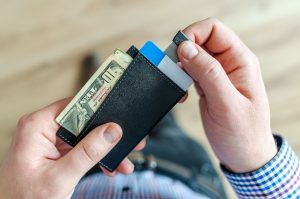Little more than a decade ago, most Australians paid for goods and services with cash, dipping into their wallets or purses. Although people still deal with metal coins and paper notes today, monetary withdrawals from banks are much less frequent, while the country itself is quickly becoming a cashless society.
Handy plastic debit and credit cards have been around for a long time, but even they are facing stiffer competition these days, particularly now that Aussies have a much broader choice of digital payment methods available. Technological advances have changed how most of us complete our transactions, and these are currently the most popular Down Under.
Credit & Debit Cards
The first credit card brand launched in Australia was Bankcard in 1974, and that was eventually withdrawn from usage by 2006. Prior to that, while there were store cards in the 1950s and 1960s, the only other credit cards were Diners Club and American Express, although they were somewhat exclusive and typically held by a minority of really wealthy people.
But once brands like Visa and Mastercard arrived, use of credit cards gradually increased, especially when combined with debit cards for instant withdrawals and payments. Although roughly 68% of Australian adults held credit or debit cards in 2022, the overall number continues to decline.
Nevertheless, those trusty slivers of plastic have been more than useful along the way, helping to shape the current and next generations of digital payment methods. They introduced the idea of multi-function usage, increased security with embedded microchips, plus contactless technology which is now deployed in mobile applications.
Prepaid Cards
Similar in many ways to both credit cards, the concept of prepaid cards has been around since the 1970s, when they created as an alternative to using coins at phone booths. The idea naturally evolved, arriving in the United States and Australia by the 1980s, offered by stores as vouchers with a set value of credit available to spend.
Now that “General Purpose” prepaid cards are available for any kind of purchase, their popularity has only increased. For example, Neosurf casinos are gambling sites favouring that particular brand of prepaid card, providing a secure payment method with fast transaction times. They are also popular among casino gamers who don’t wish to register a bank account or credit card, regarded as a safe and convenient way to make payments and set limits.
In fact, prepaid cards are something that state governments in Australia have considered, as one way to limit excessive spending at pokie machines in pubs and clubs, helping to limit problem gambling. Although the vast majority of people wager responsibly, the prepaid option is one that allows users to maintain more control of their finances.
Mobile Wallets
Based on Statista data from June 2023, Apple Pay is the most used mobile wallet brand in Australia with 54% of market share. They are followed Aussie fintech company Afteray with 35% and PayPal with 29% of usage.
Google Pay ranked fourth in Australia with less than half the number of users compared to Apple Pay. Global statistics indicate that by the end of 2023, Apple Pay will reach 500 million users, while Google Pay will have around 300 million.
Another interesting statistic is that already, more than 79% of users in Australia now use their mobile payments as an alternative or instead of their debit cards and credit cards. It’s an intriguing data point, given that in the coming years, it could mean that cards will ultimately go the same way as cash, gradually becoming obsolete.



